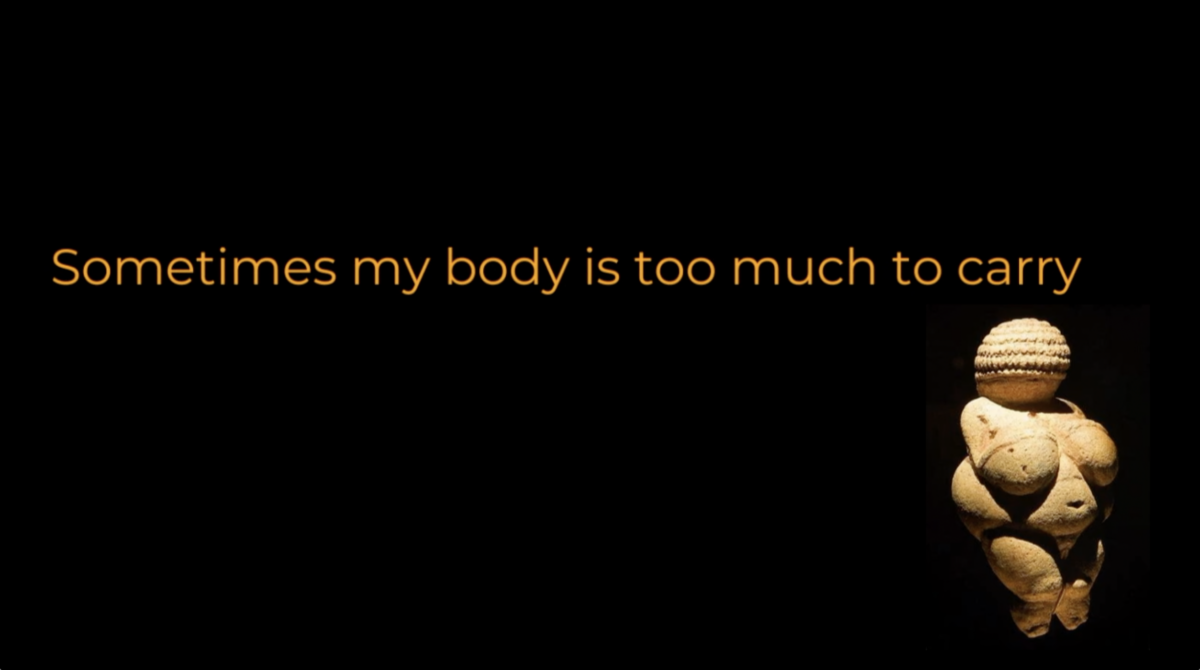As path-breaking fat activist and scholar Charlotte Cooper (2016) points out, art and representation are important dimensions of fat activism. Through Bodies in Translation (BIT) and associated research projects including Through Thick and Thin and Rolls and Race, fat activists have used digital storytelling to make short, artistic videos sharing their experiences and perspectives, creating critical interventions into dominant understandings of fat. You can learn about digital storytelling and stories on the Re•Vision Storymaking website.
Through Thick and Thin researchers have described how, in working with queer, fat, female-coded participants, creating digital stories about fatness fostered “richer understandings of difference that disrupt dominant narratives and open possibilities for living” (p. 184). The stories created through the project showcase “meaningful grapplings with bodies that have been coded as failures [and] their supposed failings, and their refusals and explorations of alternatives, point the way to new, exciting, and heretofore unimagined futures” for fat people (Lind et al., 2018, p. 187).
Below are three fat activist digital stories from the Through Thick and Thin and Rolls and Race projects, accompanied by a series of guiding questions. We encourage you to watch, sit with, and discuss the stories. Each story animates key concepts found across this module and helps to cement your understanding of fatness, anti-fatness, and fat activism!
1. Seeing My Body Differently by Emma Lind
In this video from the Through Thick and Thin project, Lind reflects on the messages she received about her fat body in a variety of contexts growing up, how these messages connect to larger social norms of race, and the ways she has learned to think about her fatness differently as an adult.
Reflection Questions:
- What popular ideas about or definitions of fatness does Lind struggle to negotiate?
- What examples of anti-fatness does Lind convey?
- What role does race (hint: whiteness) play in Lind’s embodiment of fatness?
- How does Lind understand her fat body in alternative ways? How might we understand this as fat activism?
2. My Mi’kmaw Body by Margaret Robinson
In this video from the Through Thick and Thin project, Robinson articulates her fatness as inherently linked to her Indigeneity, reflecting on how her and her ancestors’ fat bodies play a key role in their survival under violent colonial structures.
Reflection Questions
- Where does anti-fatness show up in Robinson’s story?
- How does Robinson’s story connect to the colonial, white supremacist roots of anti-fatness?
- What does fat mean to Robinson?
- How does Robinson’s understanding of her fatness challenge colonialism, white supremacy, and anti-fatness?
3. Sometimes My Body Is Too Much to Carry by Casandra Andrews
In this video from the Rolls and Race project, Andrews highlights the different meanings ascribed to her fat, Black body, and how these ascribed meanings transform her body from something that belongs solely to her to a reflection of social norms of gender, race, class, nation, and body size.
Reflection Question
- Andrews says that “my body is only a vessel that does not belong to me.” Using what we’ve learned in this module about fatness, anti-fatness, and anti-Blackness, what does Andrews mean when she describes her body as:
- ancestral?
- historical?
- political?
Hint: Think about the accompanying images Andrews uses in the video to answer this question.
Authors
Allison Taylor, Meredith Bessey, and Calla Evans
Contributors
- Elisabeth Harrison
- Lilith Lee
A capture of the title screen of “Sometimes My Body is Too Much to Carry” by Casandra Andrews, with the title in orange letters against a black background, with a photograph of the Venus of Willendorf in the bottom right corner.






